How to Fix Slow Computer After Windows Update
Windows Update is a necessary process to fix bugs, apply security updates, and introduce new features. Most of the time they run smoothly and keep your computer safe and stable, yet users sometimes report problems and errors after seemingly completing an update.
I personally got a slow computer after Windows Update ran a routine cumulative update. Upon further research I discovered this can happen for many reasons. Here, I’ll run you through why your computer might slow down after an update, how I fixed it, and the various other fixes that may apply to you.
Why do you get a slow computer after Windows Update?
Windows Update problems that lead your PC to take a performance hit usually fall into one of the following:
Failed Updates – An update can fail to be completed without you realizing. This can happen if your internet goes off, there’s a power surge, or some other form of unexpected shutdown. Not only does this stop the update, but it can also cause system file corruption, data loss, and other problems that impact performance.
Lack of Hard Drive Space – You need a fair amount of space free on your hard drive to run a successful Windows update. Some updates are quite large and during the process, the system still needs to maintain the base Windows installation while modifying it with the new data. Not having enough space may take your hard drive to the brink, causing slow performance, or it can cause the update to fail entirely.
Malware and Viruses – Malware loves to target Windows Update to corrupt the system. Malware and other viruses also take up space and system resources as they run in the background.
Outdated Drivers – Feature updates can cause incompatibility with your hardware unless its drivers are updated too.
Old Hardware – Your aging hardware might still work, but progressive Windows updates can put more strain on the CPU, RAM, graphics card, and other components.
Outdated Software – Software can also perform slowly after a Windows update because it’s no longer optimized for the current Windows architecture.
How to fix slow computer after Windows update
In my case, some unknown malware seemed to be the main reason my computer was running slowly after an update. I also had some missing system files that could have played a role too. Below you will find the most common methods to get your PC running smoothly again:
1. Perform a Full System Scan
Before applying any deeper fixes, doing a full system malware scan helps make sure viruses or any other malware are not targeting Windows Update and slowing down your computer.
2. Reinstall the update
If an update is causing trouble, it’s obviously wise to check if it was actually completed successfully. To do this:
1. Restart your computer.
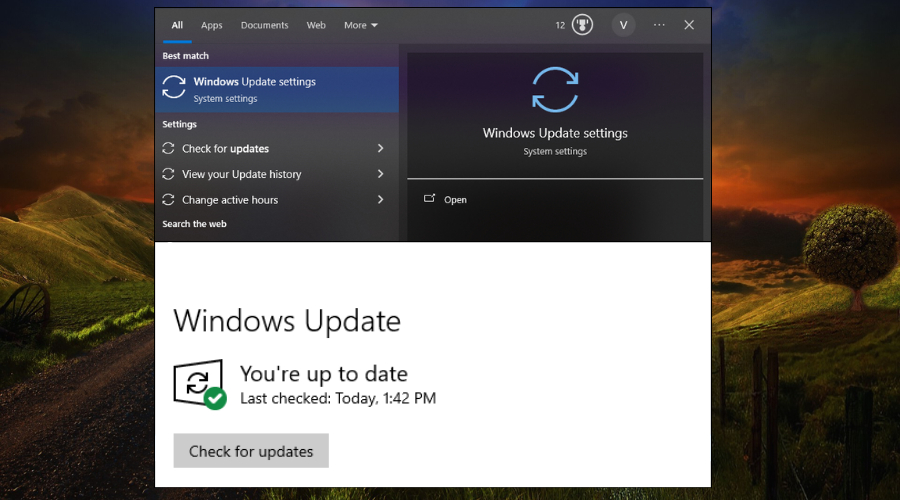
2. Go to Start > Settings > Update and security and click Check for updates. There will either be a resume option or Windows will simply find the latest update.
3. Wait for the process to be completed and allow for system reboots.
3. Update Drivers
Many manufacturers have a software tool to check for driver updates, but you should also be able to find them on their official website to download manually. In this case, you must use the Device Manager to apply them.
1. Enter the term Device Manager in the start menu search bar and open the tool.
2. Check for any exclamation warnings that show a driver definitely needs updating.
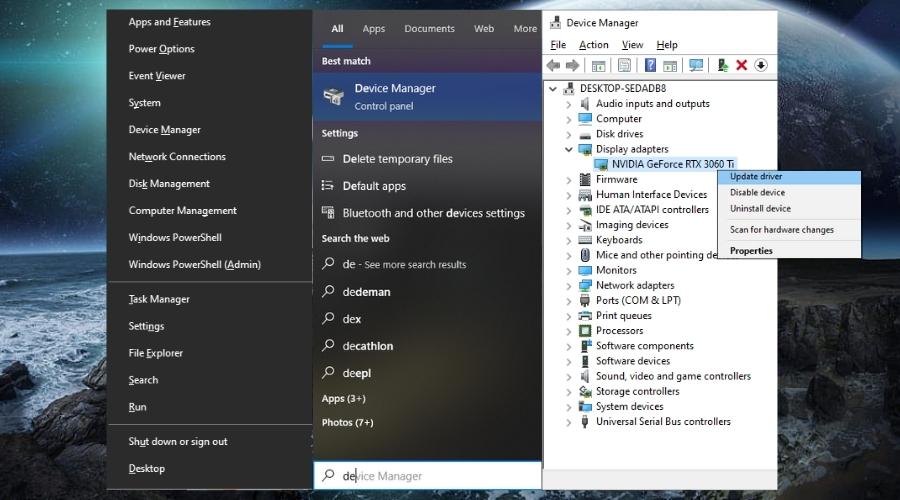
3. Right click on the device and select Update Driver.
4. Browse to the driver files you downloaded from the manufacturer’s site.
4. Update Software
If you find certain software is running slowly after an update, check for updates in the software’s settings area or visit the official website to see if there have been any new releases.
5. Run Windows Update Troubleshooter
Windows has an in-built troubleshooter to fix update problems.
1. Go to Settings > Update & Security and click Troubleshoot on the left.
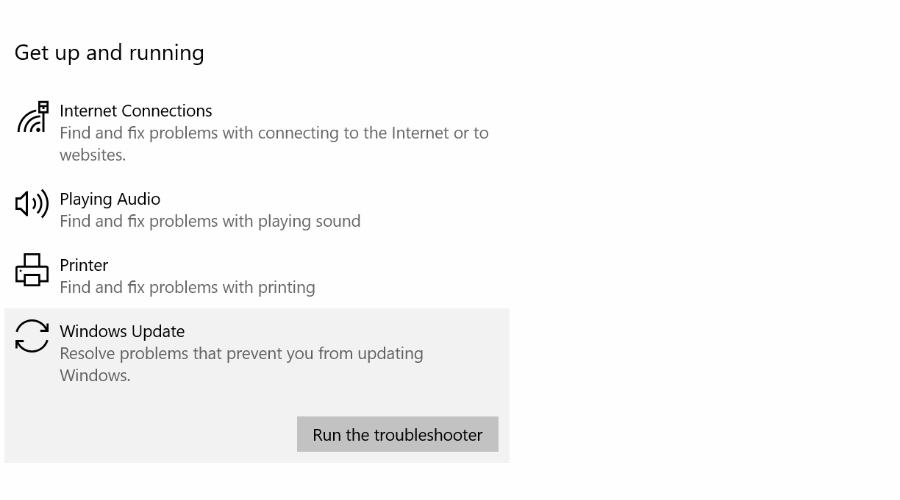
2. Scroll down to find the Additional troubleshooters link and select Windows Update.
3. Run the troubleshooter and follow the on-screen prompts.
6. Clear Windows Update Cache
Sometimes when an update fails, it gets stuck and cannot refresh itself without clearing the cache.
1. Enter CMD into the start menu search bar, highlight the Command Prompt, and select run as Administrator from the options on the right.
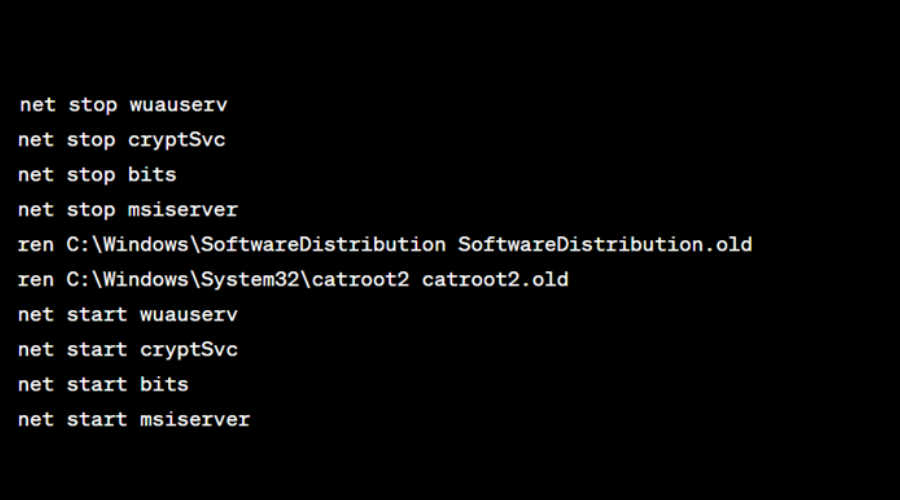
2. Type these commands and press Enter after each:
- net stop wuauserv
- net stop cryptSvc
- net stop bits
- net stop msiserver
- ren C:\Windows\SoftwareDistribution SoftwareDistribution.old
- ren C:\Windows\System32\catroot2 catroot2.old
- net start wuauserv
- net start cryptSvc
- net start bits
- net start msiserver
3. Restart your computer and then check for updates again.
7. Download the Windows update manually
Another fix if Windows update is no longer working and your system is slow is to download and install it yourself from the Microsoft site.
1. Go to the Microsoft Update Catalog and use the search bar to enter the KB number from the Windows Update page. If this isn’t displayed, you can Google the latest update number for your system.
2. Download the update and run the installer.
3. Restart your computer.
8. Run Windows DISM and SFC
Windows has two in-built tools for fixing system corruption after an update and speeding up your PC. These are the Deployment Imaging Service and Management (DISM) and System File Checker (SFC).
1. Type CMD in the start menu search bar and open the Command Prompt as Administrator.
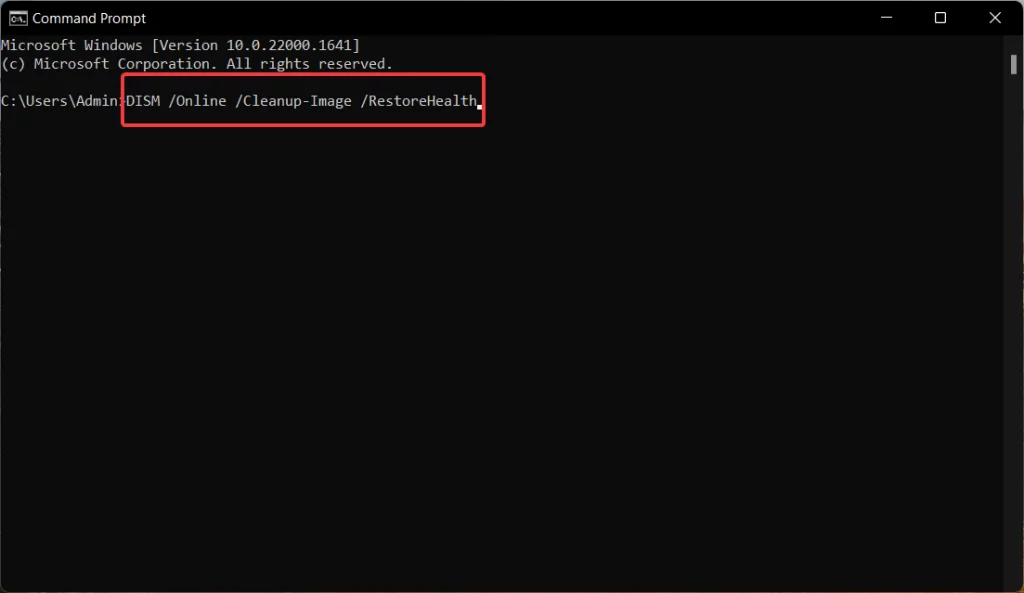
2. Enter DISM /Online /Cleanup-Image /Restorehealth and press Enter to run the command.
3. Wait for the process to complete and your computer may restart.
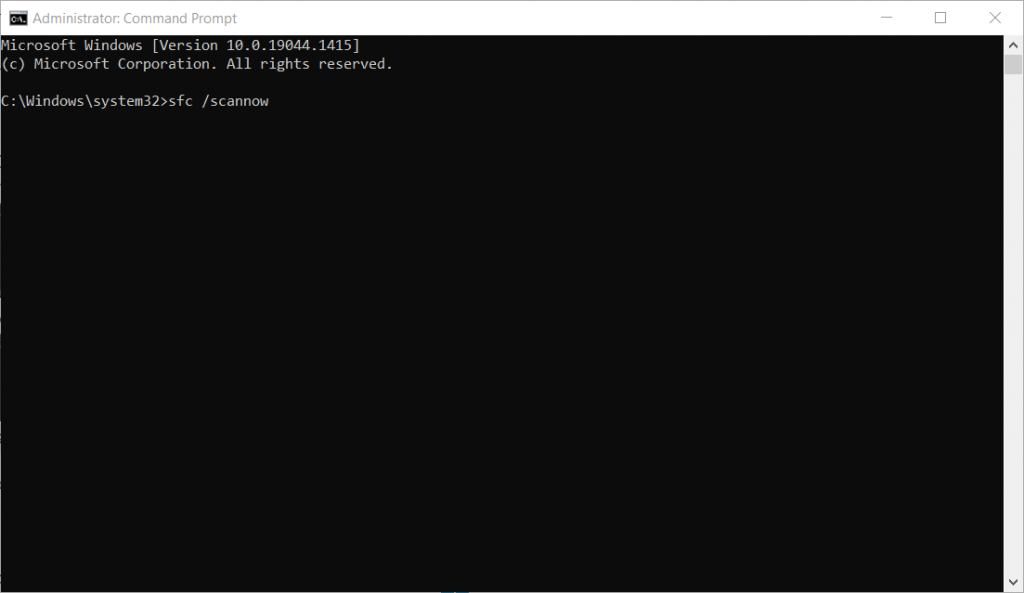
4. Go back to the Command Prompt, type sfc /scannow and press Enter to run the command.
5. You’ll know it’s complete when one of these messages is displayed: Windows found corrupt files and repaired them successfully or Windows did not find any integrity violations.
9. Use Fortect
Fortect is the ideal solution for Windows Update problems and slow system performance. It finds and replaces any corrupted or missing system files, while cleaning tonnes of useless junk files to ensure your hard drive isn’t slowing things down either.
1. Download and Install Fortect on your PC.
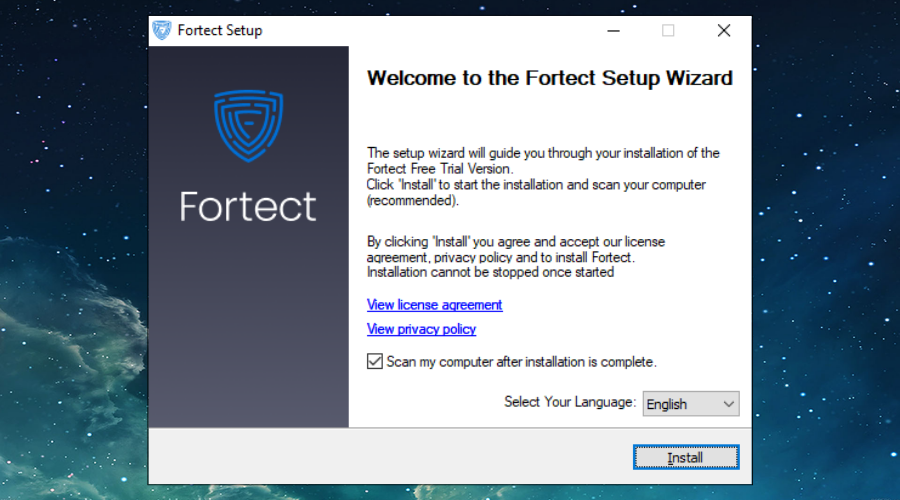
2. Launch the program and start a scan.
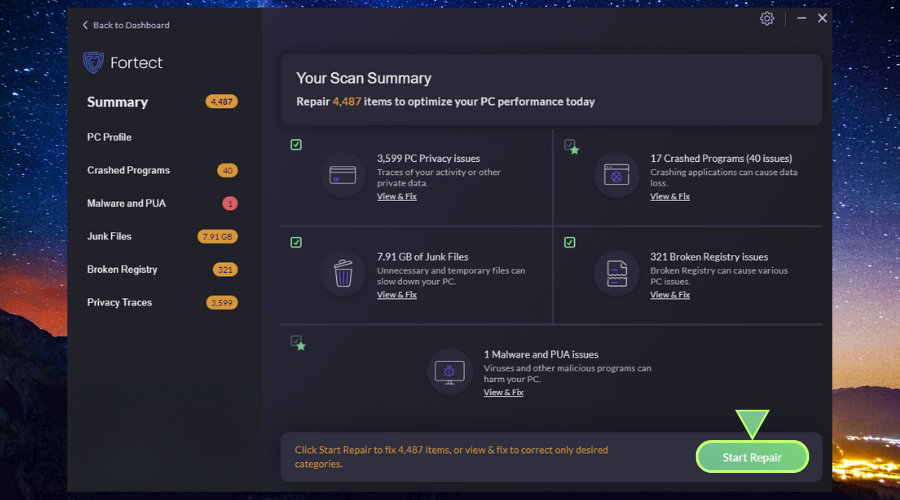
3. Once the summary is displayed, Click Start Repair and it will replace damaged or missing system files from its up-to-date repository of Windows components.
Fortect also fixes the Windows Registry, which can be another factor in slowdowns after updates.
10. Use a Restore Point
A slow computer after an update can ultimately be a mystery, so restoring your system to a previous point at least reverses any unknown changes. However, you need a restore schedule have any restore points prepared.
1. Type restore in the start menu search bar and open the Create a restore point utility.
2. From the Recovery window, click Open System Restore.
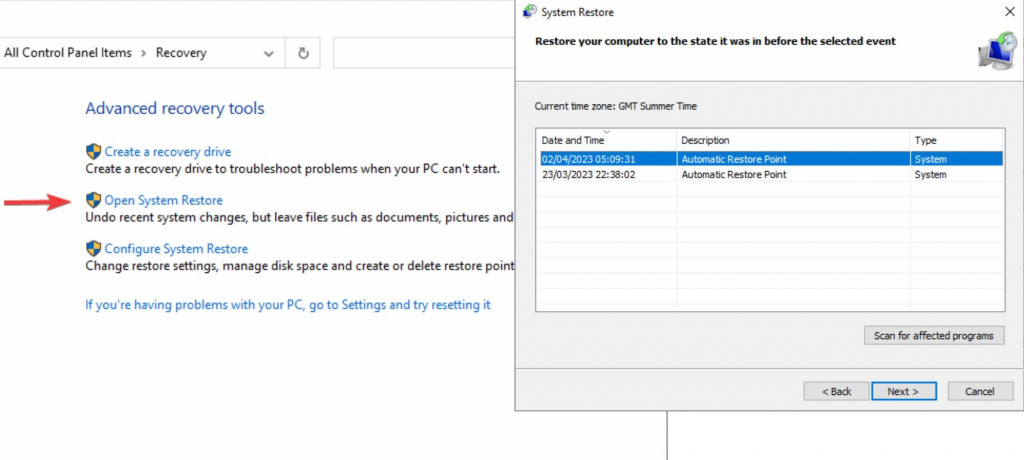
3. Choose a restore point from before the last update and follow the instructions.
4. Your computer will restart to complete the process.
Note: Loading a restore point keeps all your personal files but will revert any Windows user settings and system files to their previous condition.
Final words on getting a slow computer after Window Update
A slow computer is nothing short of frustrating, particularly when you thought you were doing the best thing for the system by updating Windows. Fortunately, with a few simple steps, you can fix Windows Update itself, if it’s broken, while repairing any corrupted system files in the process.
Fortect is especially useful because it does everything in one scan and fix process, while tuning up your PC at the same time.




